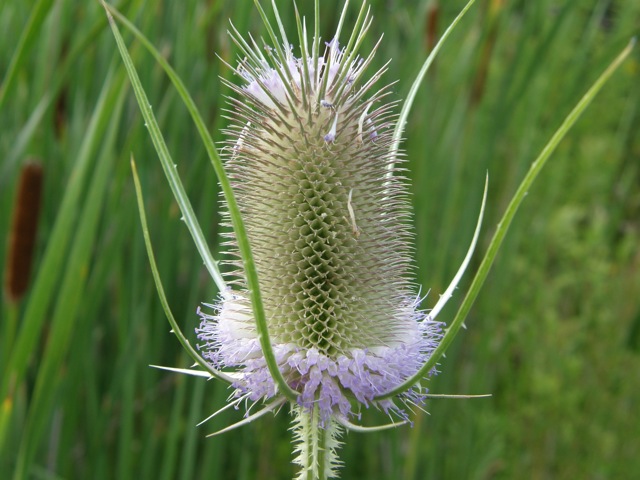Dipsacaceae, the teasel family.
Description:
Plant:
Sturdy, erect, prickly plant, 2'-6' high with small violet flowers in a dense, spiny head. Biennial.
Flowers:
Small, less than 1/2' long, violet to pink, bilateral, projecting between
stiff spines in a dense thimble-shaped head 1.5"-4" long.
Surrounded by long, upcurving, prickly bracts and supported by a very prickly
stalk.
Leaves:
Simple, opposite, slightly toothed, sometimes prickly, to 12".
Lanceolate, with bases sometimes fused about the stem.
Fruit:
Seeds contained in open spaces in the dry spiny head.
Blooming:
July-August
Habitat:
Overgrown fields, roadsides.
Comments:
Teasels are unique-looking and unmistakable.
The flowers start blooming in a band around the center of the head, and
spread both ways, resulting in a twin-banded appearance.
This plant was introduced from Europe and the dried heads were used in
the wool-weaving industry to raise (tease) the nap of the cloth, hence
the common name. The genus name comes from the Greek word "dipsa" for
thirst, supposedly because the leaves of some species, fused about the
stem, will collect and hold rainwater like a cup.
Where to find it:
Very common in the meadows north and west of the pond.
